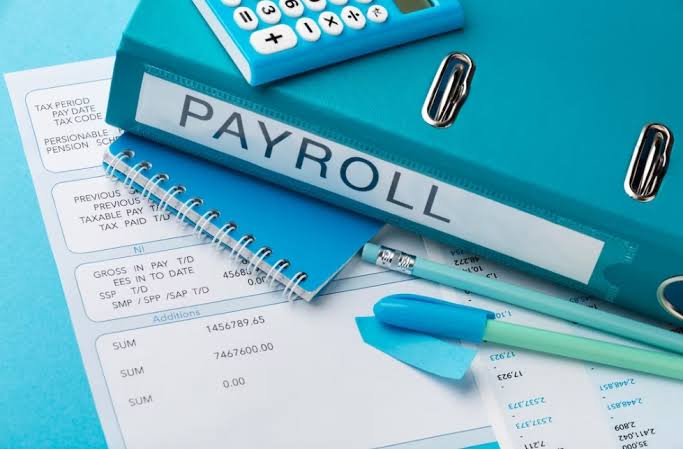Ever wondered what happens if a business misses out on remitting employees’ withheld taxes? Payroll tax debt can be intimidating for many businesses, but it can be managed efficiently with the right strategies and steps. This comprehensive guide will walk you through practical steps to address and resolve payroll tax debts.
Overview of Payroll Tax Debt: Detailed Guide
Every business with employees is mandated to withhold certain taxes from their paychecks. These withheld funds are to be paid to tax authorities. Failing to remit these taxes can result in a debt known as payroll tax debt.
Simply, payroll tax debt refers to the taxes employers legally must withhold from their employees’ wages. These withheld amounts are then remitted to the government and contribute to various federal programs, including Social Security and Medicare.
Understanding the significance of payroll tax debts is crucial for businesses. But, what if this is overlooked? It will place the company in a precarious financial situation and lead to severe IRS penalties. What’s worse? They accrue over time. This results in an even larger debt that can be challenging to resolve.
Never ignore a payroll tax debt. The longer the debt remains unpaid, the more aggressive the IRS can become in its collection efforts. This can include garnishing bank accounts, seizing assets, or shutting down the business.
Why Addressing Payroll Tax Debt is Essential?
Timely addressing payroll tax debt is a legal obligation crucial for a business’s reputation and financial health. Delays can lead to penalties, interests, and in severe cases, legal actions.
1. Legal Consequences: Payroll taxes are a trust fund tax, meaning the employer holds these funds in trust for the government. Not remitting these funds is equivalent to misappropriating them. Failure to pay can lead to severe legal consequences, including potential criminal charges.
2. Accumulation of Penalties and Interest: The IRS imposes hefty penalties and interest on unpaid payroll taxes. These can accumulate rapidly, turning what might have been a manageable debt into a significant financial burden. Beyond IRS wage garnishment, the IRS can seize business assets to settle outstanding debts.
3. Personal Liability: The IRS can hold business owners and certain other individuals personally responsible for unpaid payroll taxes. This means the IRS can pursue personal assets, such as homes or cars, to recover the owed amount.
4. Potential Business Closure: If payroll tax debts are not addressed, the IRS can take aggressive collection actions, including placing liens on business properties or even seizing and shutting down business operations.
5. Reputation Damage: Falling behind on payroll tax obligations can harm a business’s reputation. This signals financial instability, degrading trust among suppliers, clients, and potential partners.
6. Strained Cash Flow: As penalties and interest accrue, the business’s cash flow can become strained. This can make it even harder to meet other financial obligations, potentially leading to a vicious cycle of increasing debt.
7. Loss of Business Benefits: Some federal business benefits, such as certain loans or grants, may become inaccessible to businesses that are delinquent on payroll taxes.
With the support of a professional tax consultant and a proactive approach, you can mitigate the risks associated with IRS wage garnishment and other repercussions, ensuring a stable future.
Step-by-Step Guide to Resolve Payroll Tax Debt
1. Acknowledge the Debt
The first step in any debt resolution process is acknowledgment. Recognize the amount owed and the potential consequences of non-payment.
2. Seek Expert Advice
Consult with a tax professional or accountant. They can provide insights into your situation and suggest the best action.
3. Set Up a Payment Plan
If the total amount is too substantial to pay off immediately, consider setting up a payment plan with the tax authorities. This way, you can manage the debt in smaller, manageable installments.
4. Stay Compliant with Current Taxes
While addressing past debts, ensure current payroll taxes are remitted on time. This avoids compounding the problem with new debts.
5. Consider Penalty Abatement
In some cases, businesses can request a penalty abatement. This means that the tax authority might reduce or remove penalties associated with the debt. However, one must present a valid reason for the failure to pay.
6. Explore Offers in Compromise
An Offer in Compromise allows businesses to settle their tax debts for less than the full amount owed. It’s only sometimes granted, but if the tax authority believes the offered amount is the most they can expect to collect, they might accept it.
7. Stay Updated with Tax Laws
Tax laws and regulations can change. Stay informed about any updates or changes that might affect your business’s payroll tax obligations.
8. Set Up an Emergency Fund
To avoid future payroll tax debts, consider setting up an emergency fund. This fund acts as a cushion, ensuring you have the necessary funds to cover any unforeseen financial challenges.
Best Practices to Prevent Future Payroll Tax Debts
1. Maintain Accurate Records
Keeping precise and detailed records of all financial transactions, especially payroll, is crucial. This aids in timely tax calculations and payments.
2. Use Reliable Payroll Software
Invest in dependable payroll software that calculates taxes accurately and alerts you to due dates.
3. Regularly Review Finances
Reviewing the business’s financial health helps spot any discrepancies or potential issues before they escalate.
4. Educate Your Team
Ensure that your finance team is well-versed with tax regulations and is updated with any changes.
5. Plan Ahead
Forecast potential financial challenges and plan accordingly. For instance, if you anticipate a decrease in revenues, adjust your budget to ensure taxes are still paid on time.
In conclusion
While payroll tax debt can pose significant challenges, it’s manageable with a systematic approach and the right strategies. Being proactive, seeking expert advice, and ensuring compliance are the keys to effectively addressing and preventing payroll tax debts.






